| Previous :: Next Topic |
| Author |
Message |
RAW-dad
Member


Joined: 07 Jul 2017
Posts: 119 | TRs | Pics
Location: Oregon |
 |
RAW-dad
Member
|
 Mon Aug 30, 2021 1:34 pm |
|
|
Recently hiked the Skyline Trail in ONP and spent a night immediately SW of Kimta Peak at about 5150 ft on a rocky knoll. Came across some milled lumber including shingles, a bunch of nails, rusty cans, and some cylinders that look to have burned. Does anyone know what the cylinders are? Was there ever a mine in that area?
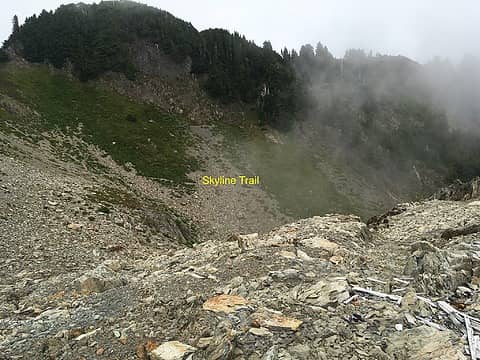 general location 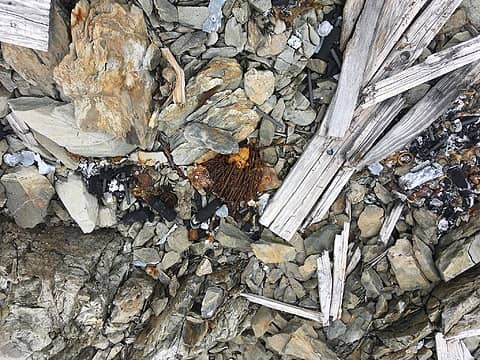 nails_etc 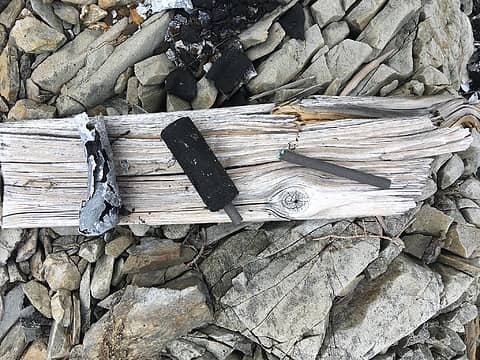 closeup of cylinder pieces
 DrScience, RodF, ForbinsAscent DrScience, RodF, ForbinsAscent
 DrScience, RodF, ForbinsAscent DrScience, RodF, ForbinsAscent |
| Back to top |
  
|
 |
Pyrites
Member


Joined: 16 Sep 2014
Posts: 1884 | TRs | Pics
Location: South Sound |
 |
Pyrites
Member
|
 Mon Aug 30, 2021 2:03 pm |
|
|
Old dry cell battery components.
Keep Calm and Carry On?
Heck No.
Stay Excited and Get Outside!
Keep Calm and Carry On?
Heck No.
Stay Excited and Get Outside!
|
| Back to top |
  
|
 |
RodF
Member


Joined: 01 Sep 2007
Posts: 2593 | TRs | Pics
Location: Sequim WA |
 |
RodF
Member
|
 Wed Sep 01, 2021 7:50 pm |
|
|
Jim Taplin's Olympic Trail Guide, 1933 edition, shows a "T." designating a telephone at Kimta, where the Queets Skyline Trail ended, at the top of the Promise Creek Trail.
However, while the 1933 Olympic National Forest map does show the telephone line coming up Elip Creek Trail, then south to Three Lakes and Finley Peak Lookout, it does not show the telephone line extending north to Kimta.
The 1940 Olympic National Park map shows the telephone line extending only to Three Prune Shelter, but not continuing north to Kimta.
So this is probably the remains of the old Kimta fire reporting telephone box from the early 1930s. Nice find! 
"of all the paths you take in life, make sure a few of them are dirt" - John Muir
"the wild is not the opposite of cultivated. It is the opposite of the captivated” - Vandana Shiva
 DrScience, RAW-dad DrScience, RAW-dad
"of all the paths you take in life, make sure a few of them are dirt" - John Muir
"the wild is not the opposite of cultivated. It is the opposite of the captivated” - Vandana Shiva
 DrScience, RAW-dad DrScience, RAW-dad
|
| Back to top |
  
|
 |
Mike Collins
Member


Joined: 18 Dec 2001
Posts: 3096 | TRs | Pics
|
|
| Back to top |
  
|
 |
Malachai Constant
Member


Joined: 13 Jan 2002
Posts: 16092 | TRs | Pics
Location: Back Again Like A Bad Penny |
Those are old school 1.5 v dry cell battery guts. The black rod (+anode) is graphite and was originally in a zinc can (- cathode) used in WWII lanterns and old battery radios. They were surrounded by a black powdery electrolyte that included MnO2 and ZnCl2 they supplied 1.5 v at substantial amperage. Technology is still used in cheap dry cells more sophisticated cells use alkaline electrolytes or Lithium hydrides. Used in old telephones and in Model T ignitions a vibrator converted to AC and a coil stepped up the voltage.
"You do not laugh when you look at the mountains, or when you look at the sea." Lafcadio Hearn
 Sculpin, RAW-dad Sculpin, RAW-dad
"You do not laugh when you look at the mountains, or when you look at the sea." Lafcadio Hearn
 Sculpin, RAW-dad Sculpin, RAW-dad
|
| Back to top |
  
|
 |
RAW-dad
Member


Joined: 07 Jul 2017
Posts: 119 | TRs | Pics
Location: Oregon |
 |
RAW-dad
Member
|
 Fri Sep 03, 2021 7:32 am |
|
|
Thanks all for your thoughts on this mystery. Sounds like dry cell batteries it is. There were probably about 25 scattered about.
I like RodF's idea that this is a telephone box, as that is consistent with the amount of milled lumber and rusty metal scattered around. There just was not that much, so not likely associated with a room-sized structure.
Fun to think that no one has been there for close to 90 years. Possibly.
 RodF RodF
 RodF RodF |
| Back to top |
  
|
 |
JonnyQuest
Member


Joined: 10 Dec 2013
Posts: 593 | TRs | Pics
|
And I thought it was a lint roller for goat fur...
 RAW-dad RAW-dad
 RAW-dad RAW-dad |
| Back to top |
  
|
 |
Klondike Ken
member


Joined: 21 Sep 2021
Posts: 21 | TRs | Pics
Location: Olympia |
Thank you for answering a couple-year-old question of mine too. I found a bunch of these graphite rods in the old burn pile at the site of the Strawberry Mountain Lookout. The lookout was located 12 miles NE of Mount St Helens, at the edge of the Tree Sear Zone, but was torn down well before the eruption. Nearby Strawberry Lake has a great ghost forest of trees killed standing, but it is quickly being hidden by new trees. The lookout site is on the boundary of the Volcanic Monument boundary. A science teacher friend thought they were battery parts, but was puzzled by their long length.
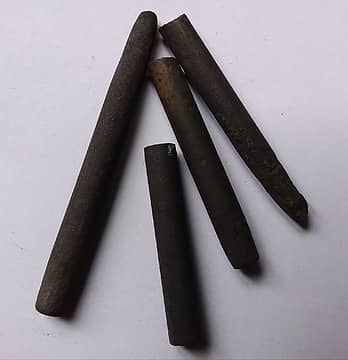 Dry cell graphite from Strawberry Mountain Lookout Mount St. Helens 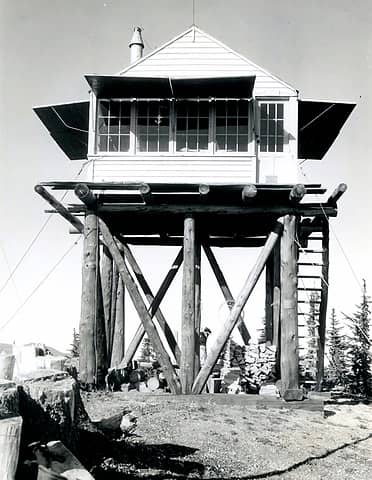 Strawberry Mountain Lookout 1936 artist unknown MSHNVM
|
| Back to top |
  
|
 |
Eric Willhite
Member


Joined: 26 Aug 2010
Posts: 204 | TRs | Pics
|
Just for clarification, in your picture, is that Kimta Peak on the right (even though it looks lower), with the trail that is dropping down (on the south side of Kimta) from the trail highpoint in that area?
|
| Back to top |
  
|
 |
RAW-dad
Member


Joined: 07 Jul 2017
Posts: 119 | TRs | Pics
Location: Oregon |
 |
RAW-dad
Member
|
 Sun Dec 05, 2021 7:32 am |
|
|
Nope. The true summit is off to the right out of the frame.
|
| Back to top |
  
|
 |
|
|